35 Recommended Daisy-Like Flowers for Your Garden In 2023
Written by Ivy
Dec 13 2022
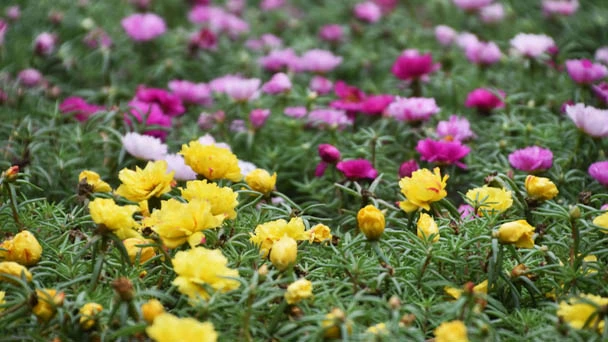
Do you want to add some unusual daisy-like flowers to your garden? Take a look at these 35 daisy-like flowers! Any environment will benefit from the color and interest these flowers bring. It's understandable why daisies are among the most widely used flowers in the world. They grow easily and are jovial, versatile, and cheerful. Consider planting some daisies in your garden if you're searching for a timeless flower that never goes out of style!
1. African Daisies (Osteospermum X Hybrida)
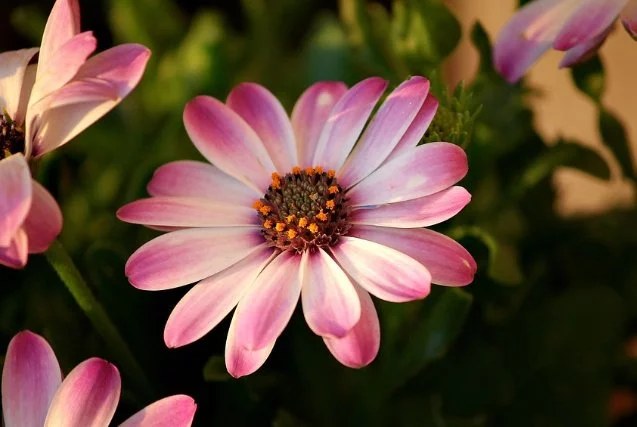
The African daisy is a lovely flower that resembles a regular daisy. Since centuries, people have been cultivating the African daisy, which is native to that continent. Given its beauty and adaptability, the African daisy is a preferred flower for gardens and bouquets.
White, yellow, pink, and purple are just a few of the colors that the African daisy can be found in. A hardy plant that can withstand heat and drought is the African daisy. african daisies are a simple-to-care-for flower that will enhance the beauty of any garden or residence.
- Light: Although the African daisy will tolerate some shade, it prefers full sun.
- African daisies do not require a lot of water because they are drought-tolerant plants.
- Fertilizer: Although the African daisy doesn't require it, a light feeding in the spring can be beneficial.
2. Asters (Aster Spp.)
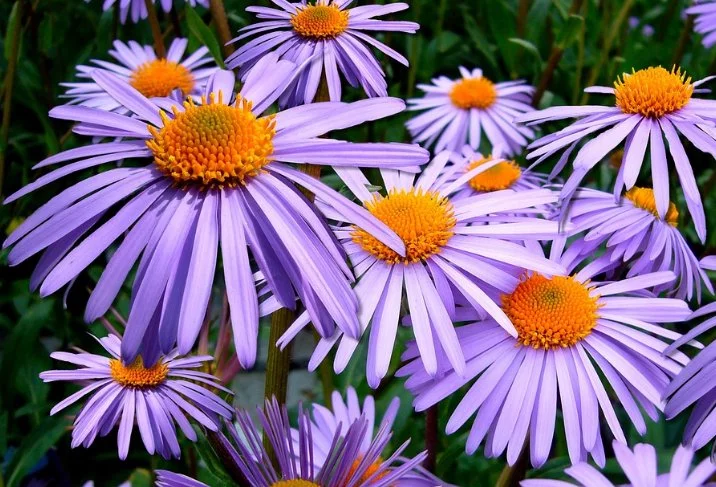
The name "aster" comes from the Ancient Greek word for "star," and indeed, these flowers do have a star-like quality to them. There are numerous colors of asters, including white, pink, purple, and blue. In the autumn, when other flowers have started to fade, they are particularly well-liked.
It's simple to grow asters, and they make wonderful cut flowers. They're a great option for gardeners who want to draw in pollinators because they also appeal to bees and butterflies.
3. Aylostera Heliosa (Rebutia Heliosa)
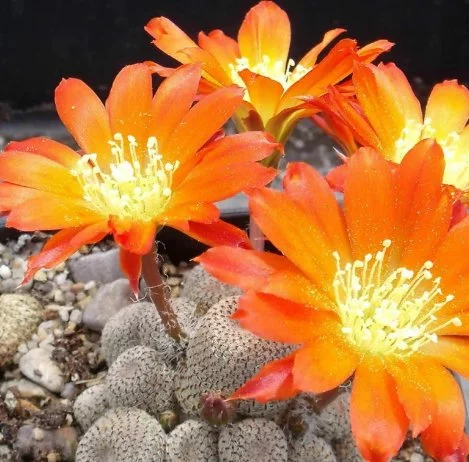
One of the most well-known and well-liked daisy replicas is this tiny Peruvian cactus. It has all the right characteristics, including a vivid yellow center, white outer petals, and long stems. The distinctive scent of a daisy is the only thing missing. But with such a cute plant around, who needs that?
This cactus is simple to maintain and a wonderful addition to any collection.
Since the Aylostera Heliosa belongs to the cactus family, it is adapted to dry environments. Allow the soil to completely dry out in between waterings when you water your plant. It's important to err on the side of caution when it comes to overwatering because root rot can result.
Although it can tolerate some direct sunlight, this plant prefers bright light. If you live in a hot climate, make sure to provide some afternoon shade to shield your plant from the stifling sun.
Beautiful white flowers will bloom on your Aylostera Heliosa in the spring and summer. Despite the fact that these flowers are quite small, they are abundant. From late spring to early summer, you'll notice that your plant is smothered in blooms.
4. Baby Sun Rose (Mesembryanthemum Cordifolium)
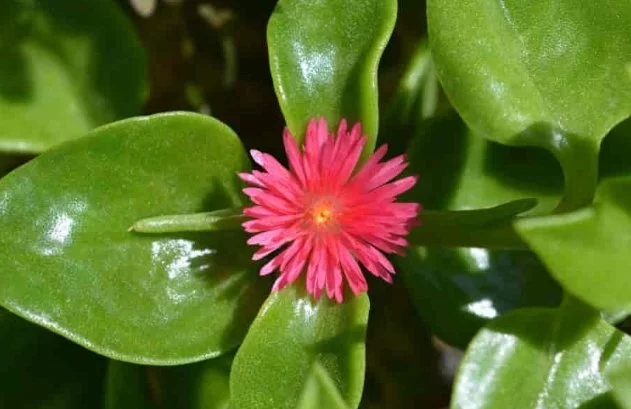
Being a succulent, the baby sun rose plant thrives in hot, dry weather. Although the flowers are tiny and yellow, they make a significant statement when planted in large numbers. They appear to be tiny suns shining in the garden.
- Light: Full sun
- Water: Once a week
- Size: 12-18 inches tall and wide
- Zones: 11-12
5. Black-Eyed Susans (Rudbeckia Spp.)
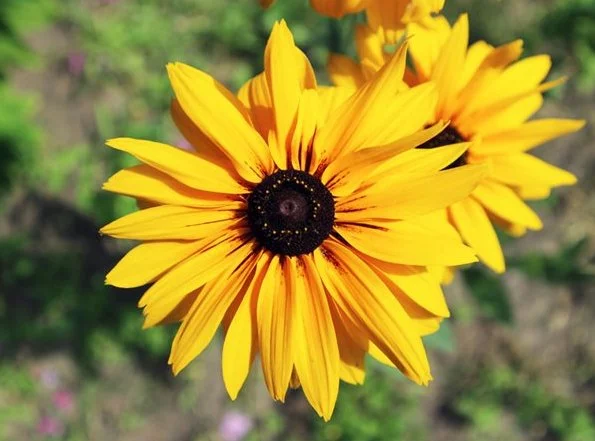
Rudbeckia, also known as black-eyed susan, is a knee-high plant with yellow flowers arranged around a mocha center disk that blooms in the summer and early fall. For a showy mass of flowers that self-seeds freely in the garden and easily establishes a colony that returns year after year, plant them in big groups. There is little to no upkeep needed.
Black-eyed Susans are a fantastic choice for beginners because they are simple to grow and care for. They don't have a preference for soil types as long as the soil is well-drained, but they do prefer full sun. They will also tolerate some shade. These resilient flowers are drought-tolerant as well, making them a low-maintenance choice for time-constrained gardeners.
6. Blackfoot Daisy (Melampodium Leucanthum)
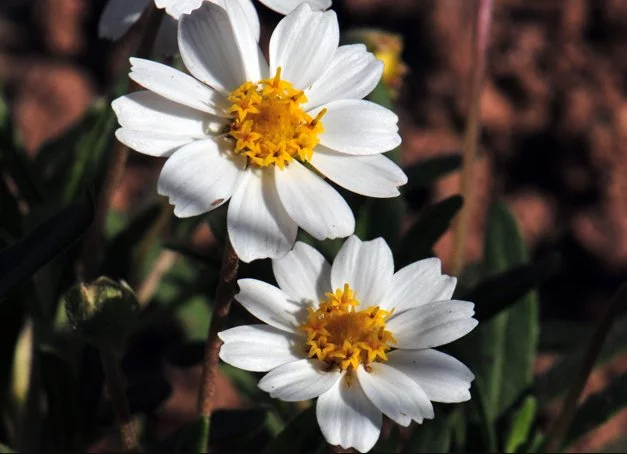
This native of North America is a member of the sunflower family and has white petals with a black center. The plant is heat and drought tolerant and blooms profusely from early summer to fall.
Blackfoot Daisy grows 12–18 inches tall and wide, making it a great option for rock gardens or as an edging plant.
It belongs to the sunflower family and resembles a daisy. It blooms abundantly from the beginning of summer to the end of the season, with white petals and a black center. The plant can withstand both heat and drought. Blackfoot Daisy grows 12–18 inches tall and wide, making it a great choice for rock gardens or as an edging plant.
7. Blanket Flower (Gaillardia X Grandiflora)
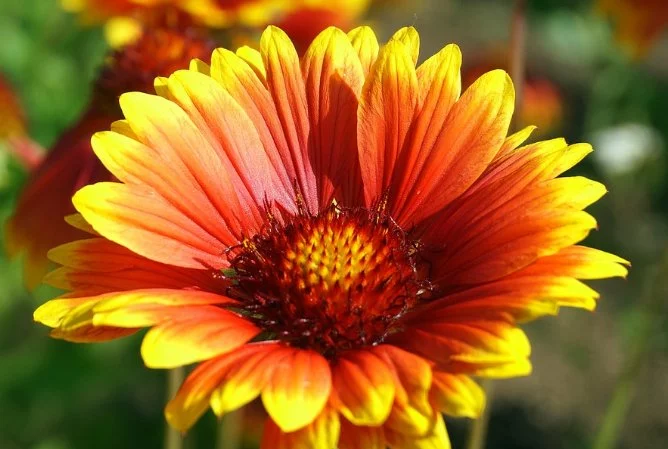
Gaillardia pinnatifada, a red gaillardia, and Gaillardia aristata, a yellow gaillardia, are the two wildflowers that make up the hybrid blanket flower in North America. The flower's resemblance to a daisy gave rise to its name.
The plant has hairy, lobed leaves and reaches a height of about 24 inches. The flower heads are about two inches wide and have petals that are red, orange, or yellow.
The blanket flower prefers full sun and blooms from early summer to late fall. They are tolerant of drought and require little fertilizer. In the spring, blanket flowers can be multiplied either from seeds or by division.
8. Butter Daisy (Verbesina Encelioides)
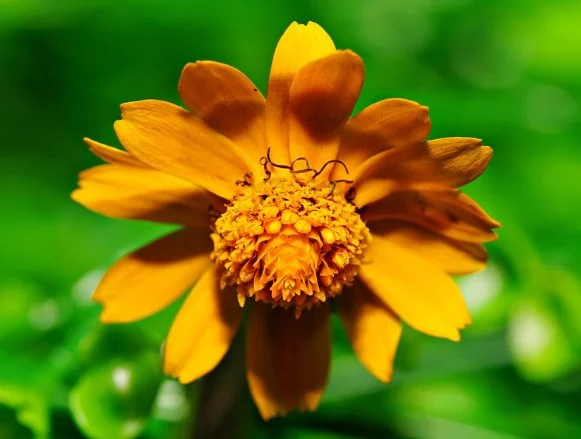
A member of the sunflower family, this flower. Due to the butter daisy's resemblance to the daisy flower, it was given that name. North America, Central America, and South America are the three continents where the butter daisy can be found. A perennial, the Butter Daisy blooms in the spring and summer.
The Butter Daisy is a lovely yellow flower with a black center. It is common to include the Butter Daisy in bouquets and other floral arrangements because it is such a well-liked flower.
9. Chocolate Daisy (Berlandiera Lyrata)
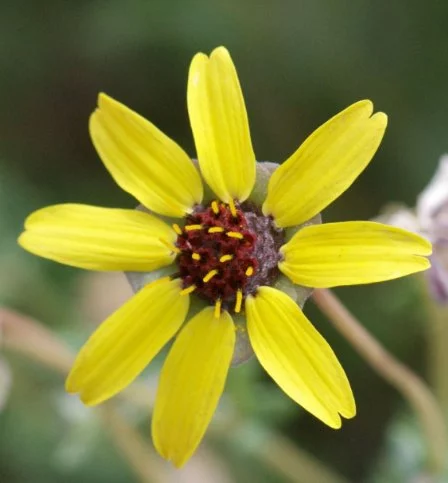
Because of its chocolate-scented leaves, this flower, which is native to North America, got its name. A perennial, summer-blooming flower, the chocolate daisy is.
The flowers have a brown center with yellow petals. The plants expand to a height of 12 inches and a width of 24 inches. It takes little water for chocolate daisies to survive in arid conditions. Additionally, they can tolerate unfavorable soil conditions.
10. Cineraria (Pericallis × Hybrida).
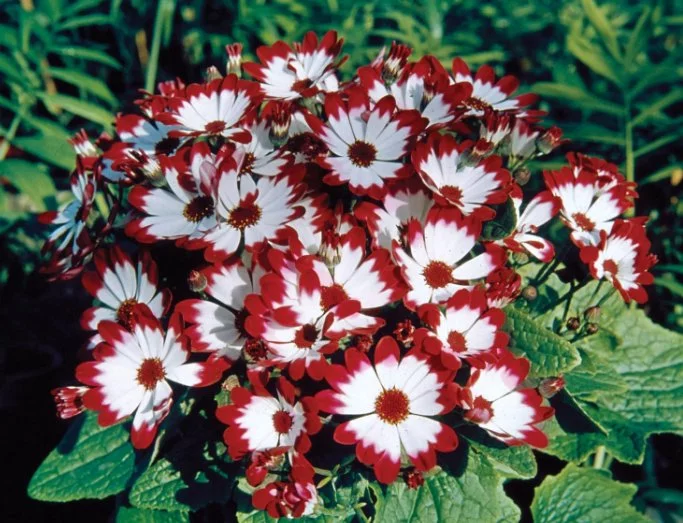
Cineraria is a Canary Island native and a member of the Asteraceae family. The name "cineraria" comes from the Latin cinis, meaning "ashes". Since the 17th century, cineraria has been cultivated as a common garden plant.
The flowers are produced in a variety of hues, including white, pink, purple, blue, and yellow. The flowers typically have a diameter of about five centimeters and are carried on upright, leafy stems.
The plants can be grown in a variety of environments and are comparatively simple to care for. The cineraria plant is a great option for bringing color and interest to your garden.
11. Compass Plant (Silphium Laciniatum)
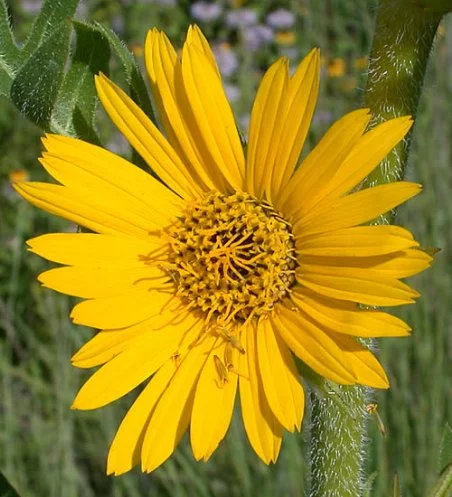
It belongs to the sunflower family and has enormous flower heads that can measure up to 12 inches in diameter. The petals are deeply lobed and have a center that is yellowish-brown.
Because the leaves point north, the plant gets its name. It is indigenous to North America and can be found growing in fields, prairies, and by the sides of roads.
12. Coneflowers (Echinacea Spp.)
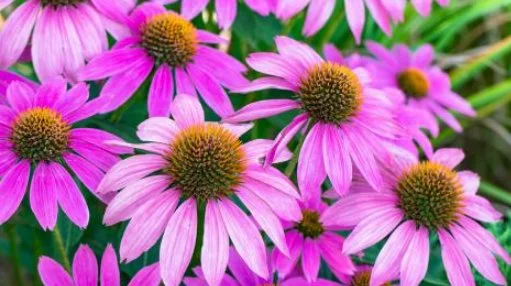
A type of flower that resembles a daisy is a coneflower. In addition to pink, purple, white, and yellow, they are native to North America. Coneflowers can grow in many different types of soil and are drought-tolerant.
For gardeners looking to create a wildlife-friendly environment, these flowers are perfect because they draw bees, butterflies, and birds. Coneflowers bloom from the beginning of summer until the fall and require little maintenance.
13. Coreopsis (Coreopsis Spp.)
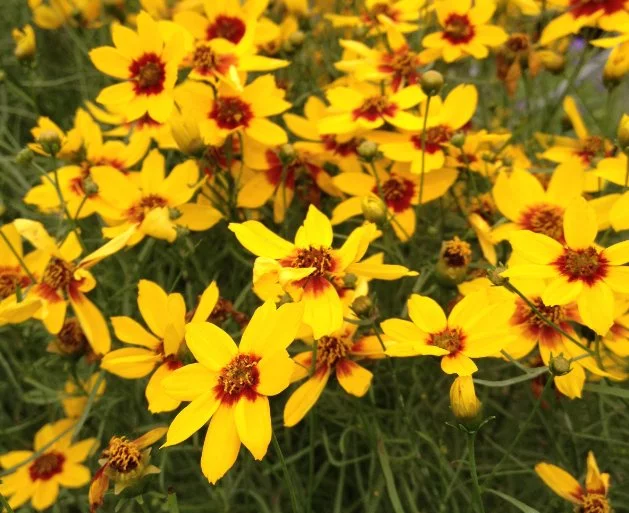
The name Coreopsis comes from the Greek words "koris" and "opsis," which mean "bug" and "view," respectively, the best Native to North America, coreopsis can be found there in USDA hardiness zones three through nine.
Although there are numerous coreopsis species, they all have some characteristics in common. They typically have red, yellow, or orange flowers and are annuals or perennials. The plant blooms from early summer to late fall, and the leaves are typically green or blue-green.
Care for coreopsis is not too difficult. They favor soil that drains well and full sun. that if they are grown in a pot, they will need to be watered more frequently.
14. Cornflower (Centaurea Cyanus)
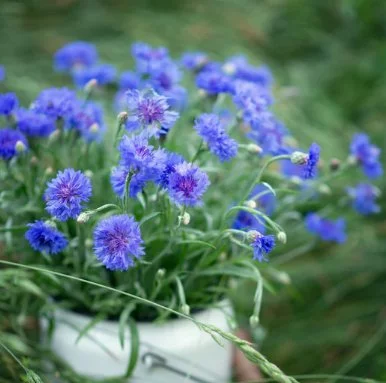
The cornflower is a flower that looks like a daisy. Centaurea Cyanus is the official scientific name for cornflowers. In North America, the cornflower has become a native plant. It is originally from Europe.
An annual plant, Cornflower can reach a height of about two feet. The blue cornflower blooms in the summer and has blue flowers.
The daisy's relative, the cornflower, belongs to the Aster family. Bluebottle, Blue Cap, and Bachelor's Button are some of the other names for Cornflower.
15. Daisy Bush (Olearia X Scilloniensis)
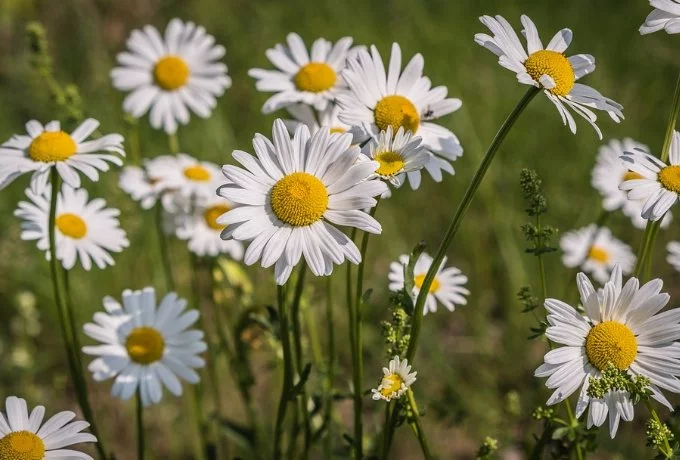
The English and New Zealand daisies have been crossed to create this. The flowers bloom in late spring and early summer, are white with yellow centers.
The plants thrive in full sun and reach heights and widths of about three feet. Once established, daisy bushes can withstand drought and produce excellent-cut flowers.
16. False Sunflower (Heliopsis Helianthoides)
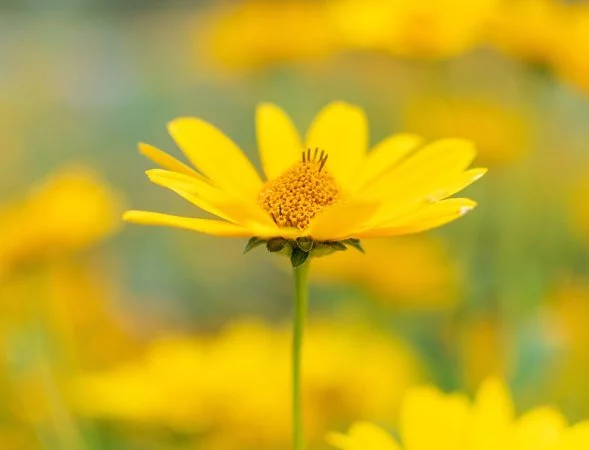
A member of the sunflower family, this North American wildflower is also referred to as Oxeye Sunflower. The false sunflower blooms from June to September and grows up to six feet tall.
Yellow ray flowers and brownish-red disc flowers are present in the two to three inch wide flower heads. The False Sunflower is a native of the eastern and central United States, where it grows in open woods, fields, and by the sides of roads.
17. Garden Mum (Chrysanthemum)

Chrysanthemum or "mums", as they are commonly called, come in a wide variety of colors and sizes. The huge daisy-like flowers come in a variety of colors, including white, yellow, pink, purple, red, and even bi-colored blooms.
Chrysanthemums were first grown commercially in China more than 2500 years ago, and they were introduced to Japan at the beginning of the eighth century. Mums are currently among the most widely used flowers in the world.
18. Gerbera Daisy (Gerbera Jamesonii)
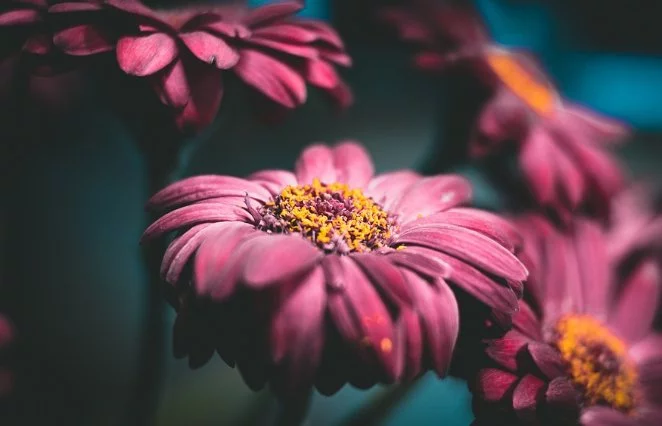
A lovely flower with a daisy-like appearance is the gerbera daisy. The national flower of South Africa and a native there is the gerbera daisy. Although the Gerbera Daisy comes in a variety of hues, white is the most common.
For bouquets and arrangements, the Gerbera Daisy is a very popular flower. The Gerbera Daisy is the ideal flower to choose if you're looking for something that resembles a daisy.
19. German Chamomile (Matricaria Chamomilla)
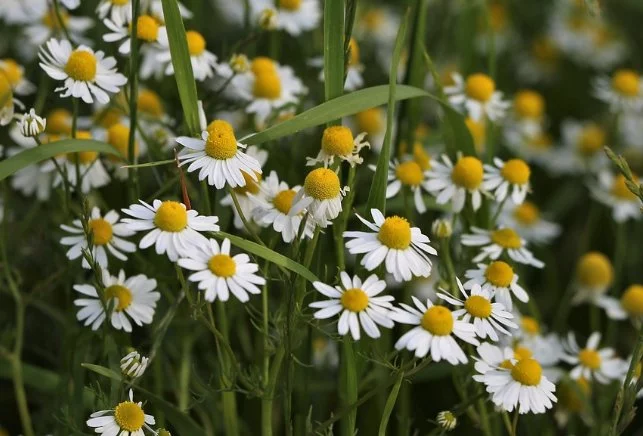
The Asteraceae family includes this flower, also referred to as common chamomile. It is an annual herb that gets up to about 12 to 24 inches tall and has both white petals and yellow discs.
The flowers of German chamomile, which bloom in the summer, can be used to make tea. Numerous health advantages of chamomile tea have been reported, including relief from anxiety, insomnia, and digestive problems.
German chamomile originated in Europe and Asia, but today it can be found everywhere. This flower has a very similar appearance to a daisy, which is why people frequently confuse it for one.
20. Ice Plant (Delosperma Cooperi)
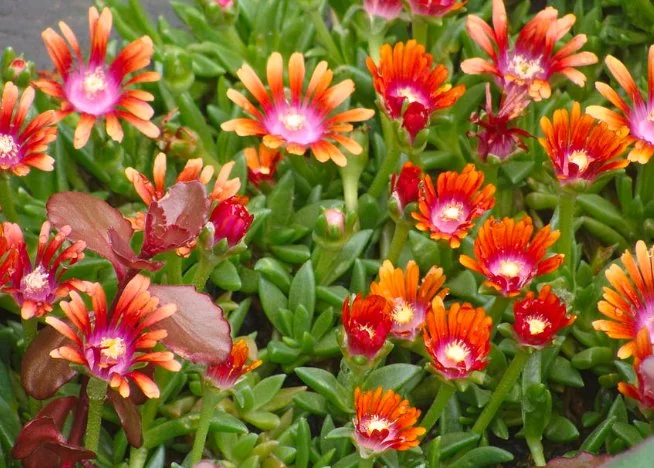
Originally from South Africa, the Ice Plant is a perennial succulent. The shimmering, icy-looking blooms that cover the plant in the summer gave it its name. The flowers are ideal for adding a splash of color to your garden during the day because they bloom in the morning and close at night.
An adaptable plant with many applications is the ice plant. It is ideal for adding color to your garden, serving as an accent plant in your landscape, or even acting as a ground cover.
21. Leopard Plant (Ligularia Przewalskii)
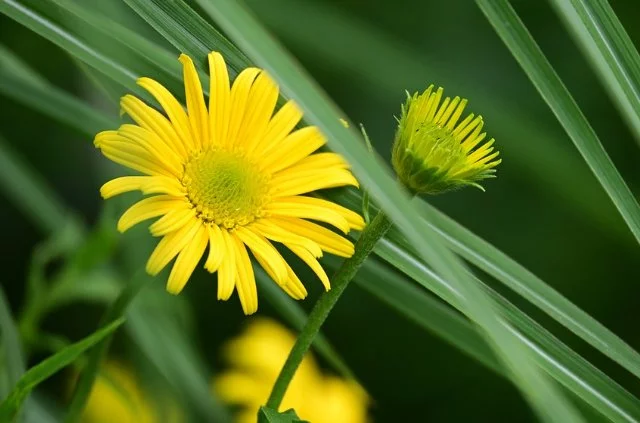
This magnificent flowering plant will produce a profusion of flowers that resemble tiny daisies. On long, slender stems, the leopard plant flowers are carried, and they have a lovely leopard-like spotted pattern. Any garden would benefit from having this plant in it for interest and beauty.
Perennial plant known as "The Rocket" is Chinese in origin. It has heart-shaped dark green leaves and reaches a height of about 24 inches. This plant thrives in full sun or light shade and prefers to grow in moist, well-drained soil.
22. Leopard's Bane (Doronicum)
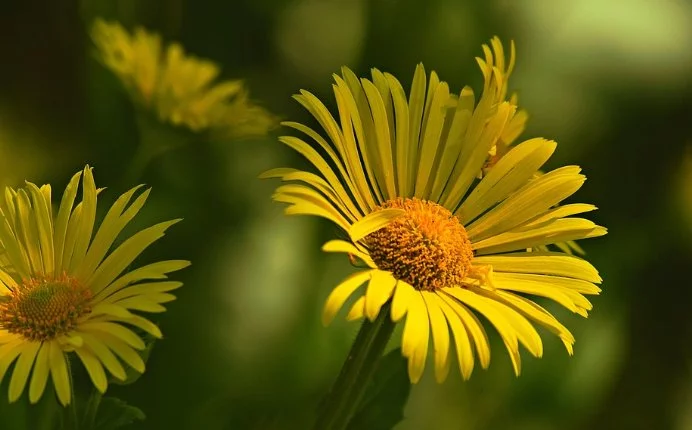
This flower is also sometimes called "Leopard's bane ointment plant" or "liverwort". This plant was given the name "Leopard's Bane" because it was once included in an ointment that was supposed to treat leopard-caused wounds.
It is a native of Europe and a member of the Asteraceae family. In North America, it has grown wild.
Summer and spring are when Leopard's Bane blooms. The flower heads are yellow and resemble daisies. The size of each head is between an inch and two. About 18 inches tall is how tall the plant gets.
23. Ligularias
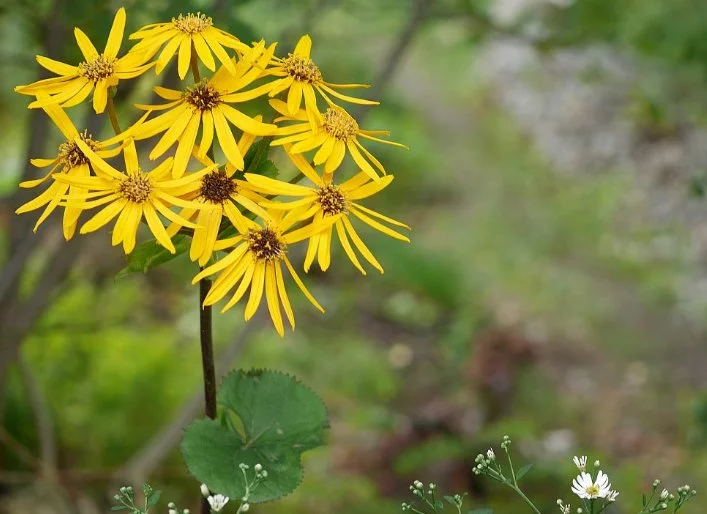
They are distinctive in addition to being attractive. And they have daisy-like blooms!
Ligularias are a kind of flower that are indigenous to Europe and Asia. They belong to the same family as chrysanthemums, daisies, and sunflowers, which is the Asteraceae.
Large, showy flowers that are borne in clusters are a characteristic of ligularias. There are several petals on each flower, and they can be red, yellow, or orange in color.
24. Marigold (Calendula Officinalis)

This blossom of Marigold has the appearance of a tiny, yellow daisy. It originated in Europe and became a part of North American culture. Asteraceae is a family that includes marigolds.
This plant is used as an herbal treatment for menstrual cramps, skin inflammation, and wounds. The flowers are also used to make a yellow dye.
25. Mexican Flame Vine (Senecio Confusus)
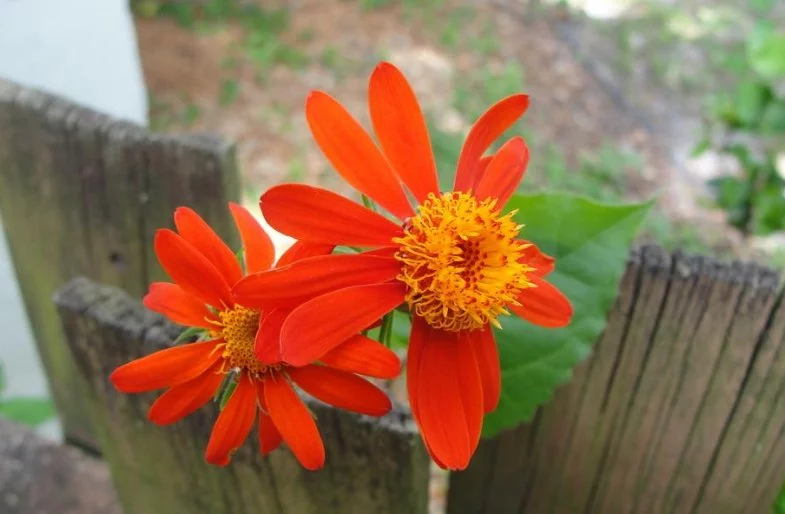
Beautiful and unusual, the Mexican Flame Vine resembles a cross between a daisy and a sunflower. The leaves are green with white stripes and have bright orange petals with yellow centers.
Native to Mexico and Central America, the Mexican Flame Vine can grow in both full sun and some shade. It's a fast-growing vine that can grow up to 20 feet in length, and it's a great option for giving your garden some color and visual interest.
26. Mexican Sunflower (Tithonia Rotundifolia)
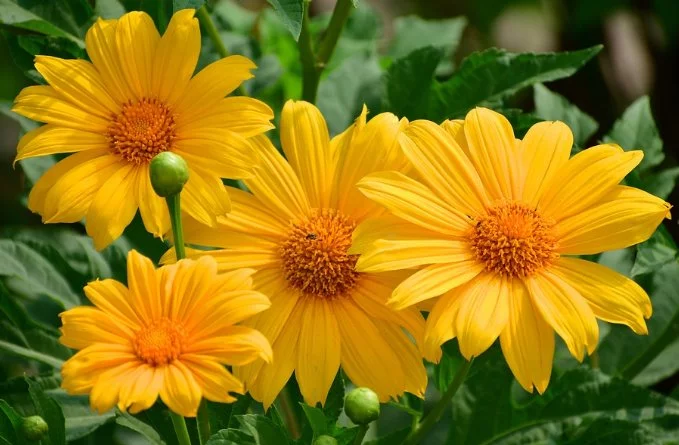
A strong, tall plant that grows up to six feet tall, the Mexican sunflower is a beautiful flower. Large and showy, the flowers have orange or yellow petals with a dark brown or black center.
The plant is indigenous to Mexico and Central America, but many regions of the United States have seen its naturalization.
Mexican sunflowers are simple to grow from seed and adaptable to a variety of growing environments. The flowers are excellent for cutting, and the plants bloom from summer until fall.
27. Painted Daisy (Tenacetum Coccineum)
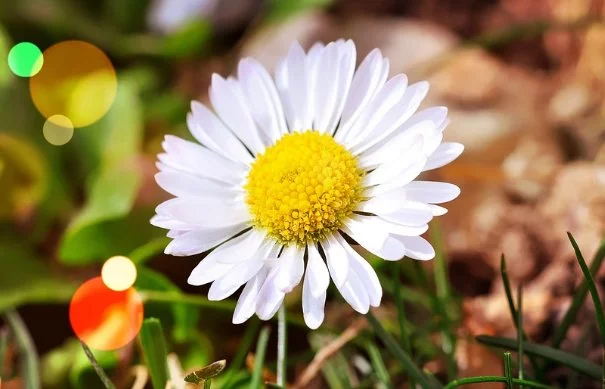
This is yet another lovely flower that resembles a daisy. The Painted Daisy is a native of Mexico and can be discovered in the wild in Central America. They have been brought to Europe and North America, where they are grown as ornamental plants.
In the same plant family as the Chrysanthemum, the Painted Daisy is an Asteraceae member. The long, slender petals of the white flowers have yellow centers.
The plant spreads out to a diameter of 12 inches and reaches a height of 24 inches. Annual Painted Daisy plants bloom from summer to fall. They make excellent cut flowers, are simple to grow, and require little maintenance.
28. Pot Marigold (Calendula Officinalis)
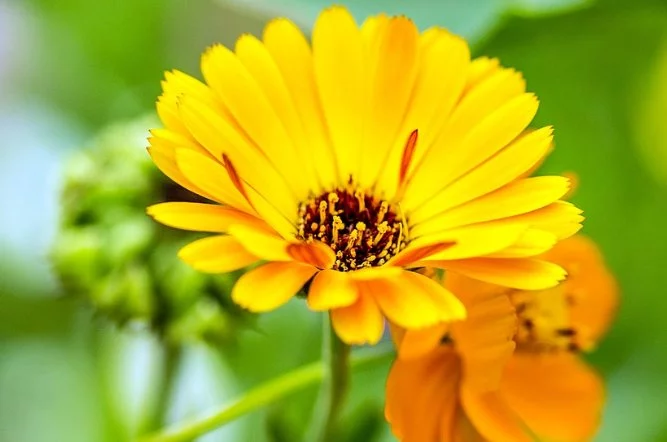
The calendula or English marigold is another name for this flower. It's a plant with gorgeous, daisy-like flowers that has been used medicinally for centuries.
Although the Mediterranean region is where calendula officinalis originally originated, it is now widespread throughout the world. Ointments and creams frequently contain this flower because of its well-known medicinal qualities.
Since the time of the ancient Egyptians, calendula flowers have been used medicinally. For its curative qualities, it was also used by the Greeks and Romans.
In the sixteenth century, this plant was brought to England and quickly became well-liked. Calendula is still used as a medicine today, and its acceptance as a decorative flower is growing.
29. Purple Coneflower (Echinacea Purpurea)
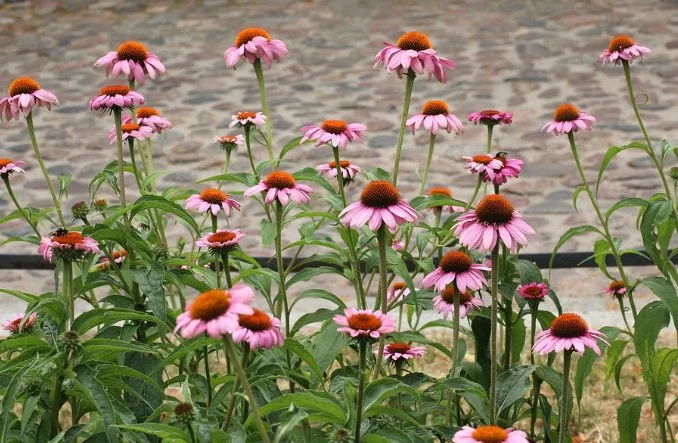
A member of the sunflower family, this native of North America. The daisy-like flower heads are actually made up of numerous tiny flowers. Bees, butterflies, and birds are drawn to them as they bloom from early summer to fall. The plants are simple to grow in full sun, well-drained soil.
Any garden would benefit from the Purple Coneflower because it adds beauty and is useful for medicine. Teas and tinctures made from the plant's roots and leaves can strengthen the immune system, reduce pain, and fight inflammation.
30. Seaside Daisy (Erigeron Glaucus)
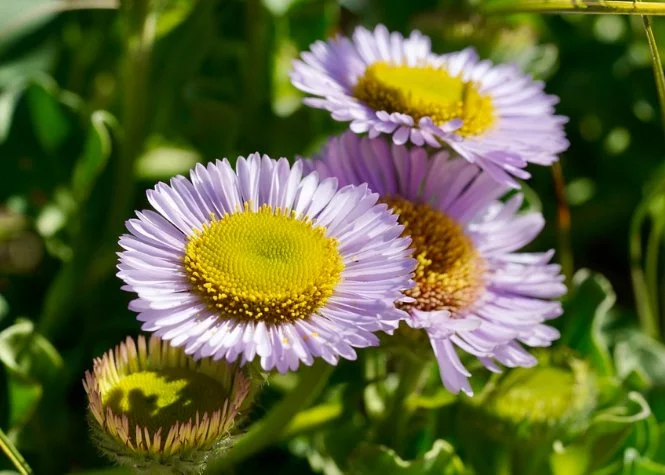
This tiny daisy is a true beauty with its delicate lavender flowers and silvery-green leaves. It is a native of the west coast of North America and frequently grows in sandy soils close to the water. Seaside daisies are a great addition to any garden and are comparatively easy to care for.
31. Shasta Daisy (Leucanthemum X Superbum)
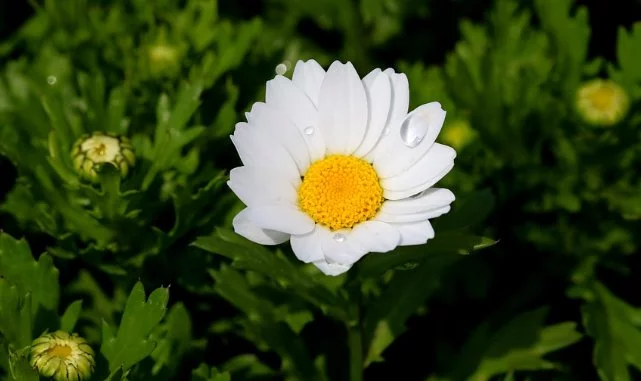
This flower is indigenous to Europe and Asia and is a member of the aster family. The name "Shasta" comes from Cali.'s Mount Shasta. The daisy-like flowers have a long blooming season and are white with yellow centers.
The plant is 24 inches tall and has lance-shaped, dark green leaves. It is a drought-resistant plant that is simple to grow. When used as a border plant or in large plantings, shatasta daisies look fantastic in gardens.
32. Sneezeweeds (Helenium)
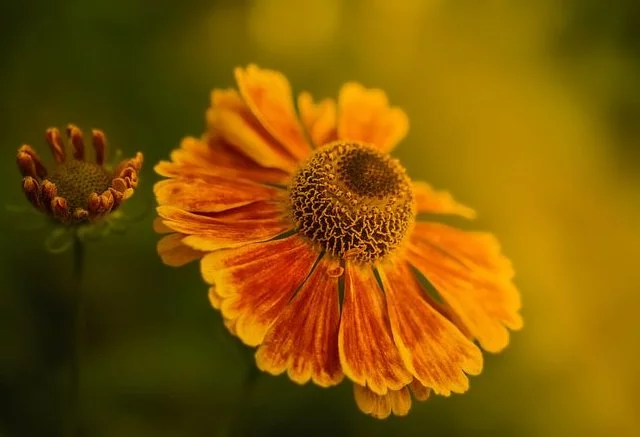
A group of plants known as sneezeweeds belongs to the sunflower family. They are so named because they expel a powdery substance that, when inhaled, can make people sneeze. The common dandelion, or Taraxacum officinale, is the most popular sneezeweed.
33. Tickseed (Coreopsis Verticillata)
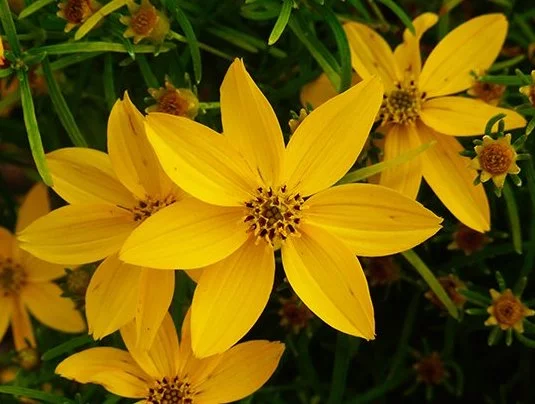
Tickseed is a different flower that resembles a daisy. It is a perennial that prefers full sun and blooms in late spring to early summer. The flowers are about an inch in diameter and the plant can reach heights of two feet.
The leaves are dark green, and the petals are yellow with brownish-red centers. It's not particularly difficult to grow tickseeds, which are indigenous to North America. You can either purchase already started plants or start them from seeds.
34. Trailing Ice Plant (Lampranthus Spectabilis)
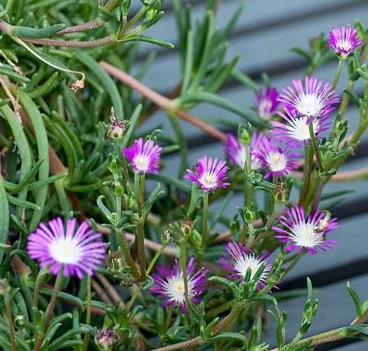
The daisy-like flowers on this widely dispersed native of South Africa are pink and orange. Once established, the plant is drought tolerant, making it ideal for those hot, dry spots in your garden. The height and width of a trailing ice plant are both about 18 inches. It works well as a ground cover or as an addition to a rock garden.
35. Zinnia
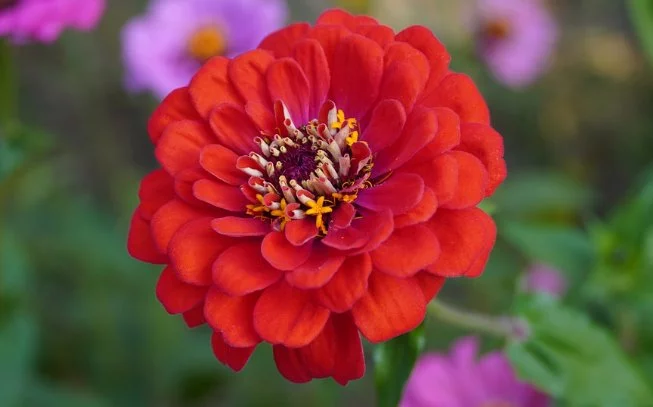
A genus of plants belonging to the daisy family's sunflower tribe is called zinnia. Their native habitats are scrub and dry grassland, with Mexico serving as a hub for diversity in a region spanning from central North America to northern South America.
The genus's species are distinguished by their lone, brightly colored flowers on long stems.
FAQs
Are Coneflowers and Daisies in the Same Family?
No, they are not; the coneflower family is Echinacea, while the daisy family is Asteraceae. However, both plants belong to the same order, Asterales. Other well-known flowers in this arrangement include marigolds, sunflowers, and chrysanthemums.
Both daisies and coneflowers are common garden plants that are frequently used in bouquets and arrangements.
These two flowers share a lot in common even though they are unrelated. Bees and other pollinators are attracted to the showy flowers on both plants. Coneflowers and daisies are also in bloom in the summer and can grow in a variety of environments.
What Flower Looks Like a Daisy But is Yellow?
The flower is known as a dandelion. Although dandelions are technically weeds, they are still very attractive flowers. Dandelions have yellow and white petals. In North America, they are very prevalent. The typical places to find them growing are in backyards or fields.
What's the Difference Between An Aster and a Daisy?
Two very well-liked flowers are asters and daisies. Both have flowers that resemble daisies, but they differ significantly in some important ways. Compared to daisies, asters have more petals, and they are also typically bigger in size. Furthermore, asters usually bloom later in the growing season than daisies. The final difference between the two plant species is height.
Conclusion
There you have it, then! There are numerous flowers that resemble daisies flowers, and these are just a few of them. Watch for these gorgeous creatures the next time you're in the garden. And if you're feeling particularly daring, why not try cultivating some of these daisy substitutes yourself? They'll give your garden a special flair that will wow your family and friends. Thanks for reading!
Latest Updated
- Benefits of Bugleweed - 7 Science-backed Health Benefits
- Bugleweed Dangers & Side Effects - Is It Poisonous?
- How to Plant Evergreen Trees - What You Should Know
- When to Plant Evergreens - Grow Guide for Evergreen Trees
- 12 Wonderful Evergreen Shrubs for Your Garden
- 12 Popular Evergreen Plants with Pictures for Beginners
- When And How To Prune A Lilac Bush Like a Pro
- How to Grow & Care for Lilac Vine (Hardenbergia Violacea)
- Japanese Lilac Tree (Syringa Reticulata) Care & Propagation Guide
- Shumard Oak Pros and Cons - What to Know
Popular Articles
- Winter maintenance of Antirrhinum Majus
- How to Grow Terminalia Mantaly Tree
- How to Grow and Care for Crossostephium Chinense
- How to grow Antirrhinum Majus in spring
- Peristeria Elata (Dove Orchid) Profile: Info & Care Guide
- Underwatered Snake Plant (Sansevieria Trifasciata) - Signs And How To Fix
- How to Care for Brazilian Jasmine Plant (Mandevilla Sanderi)
- How to Grow & Care for Graptopetalum Purple Delight in Summer
- Rosa Chinensis (China Rose): Plant Growing & Care Tips
- How to Care for Baby Sun Rose (Aptenia Cordifolia)